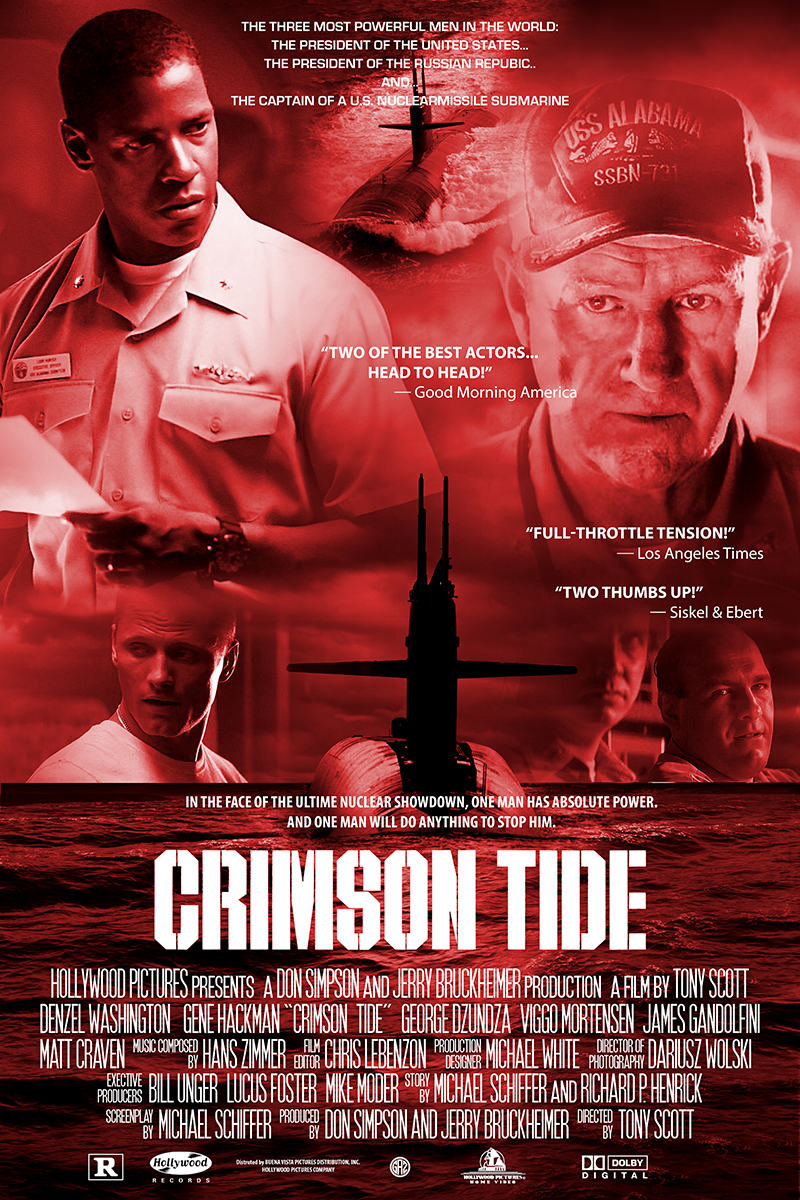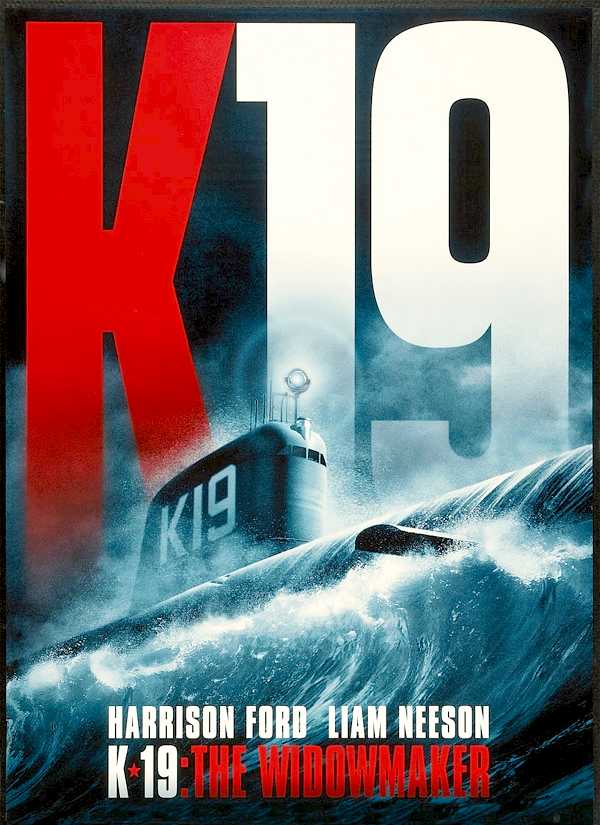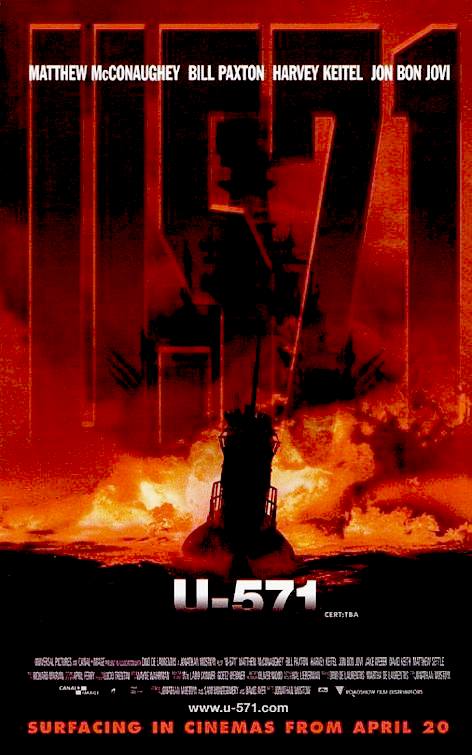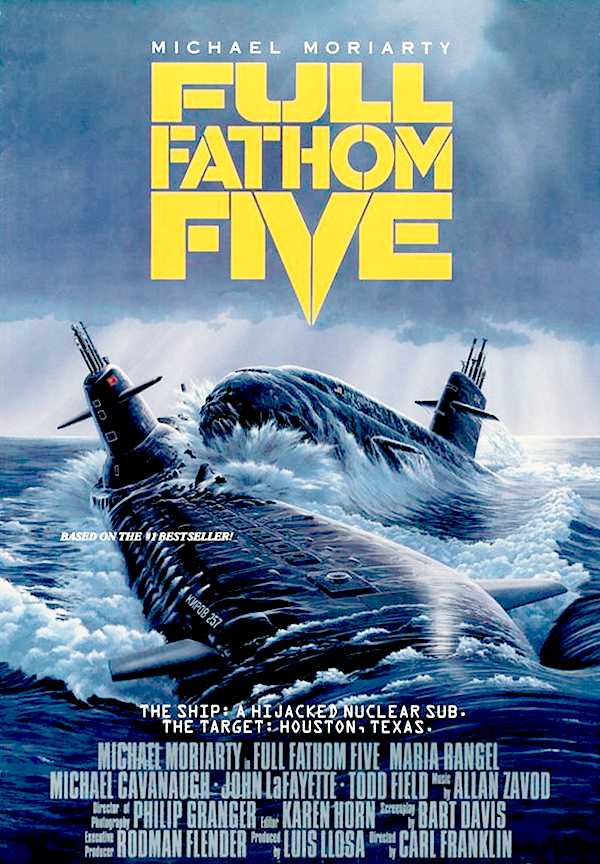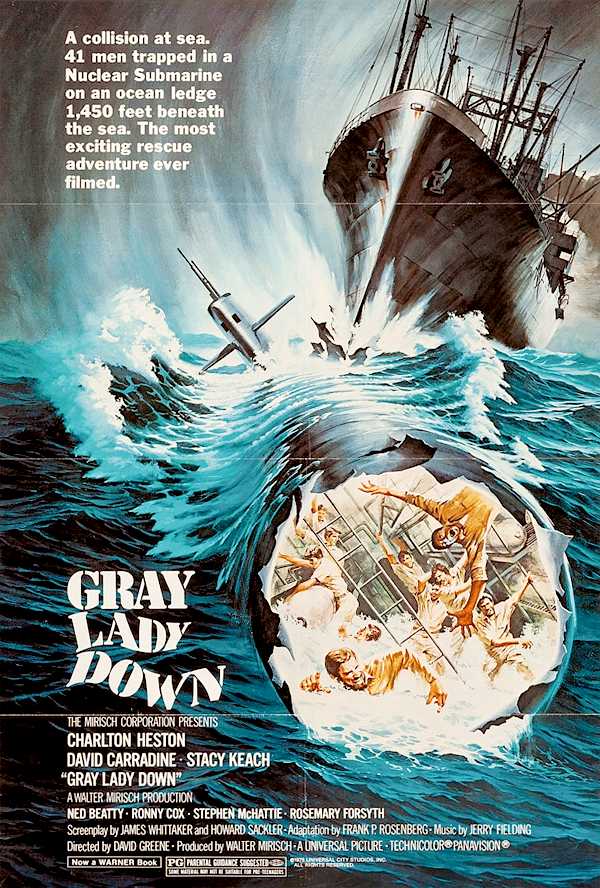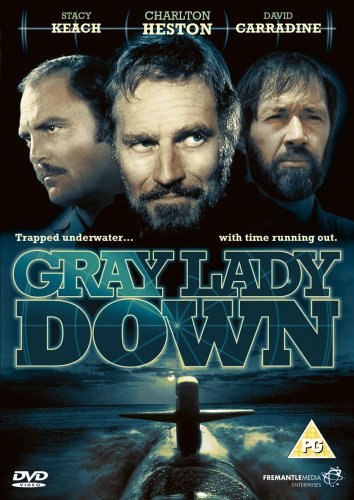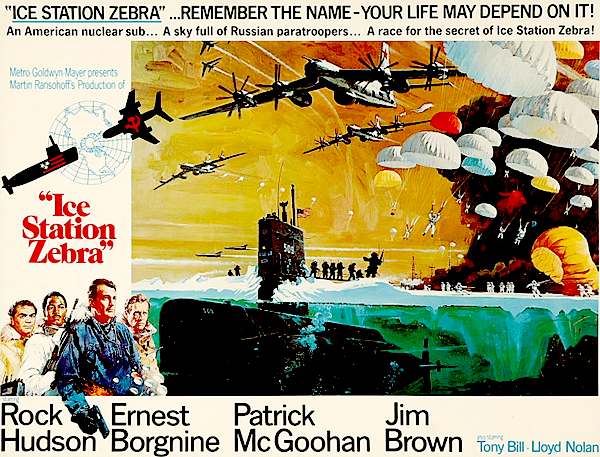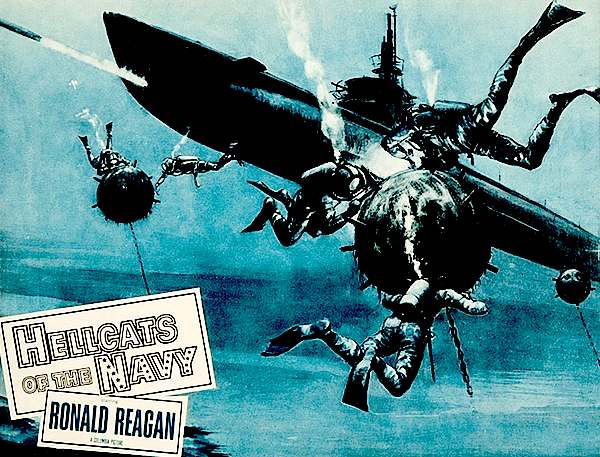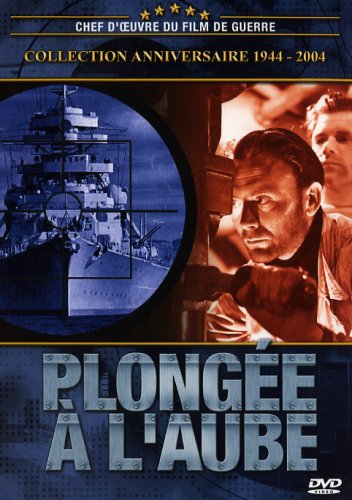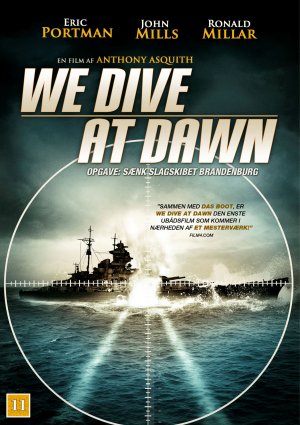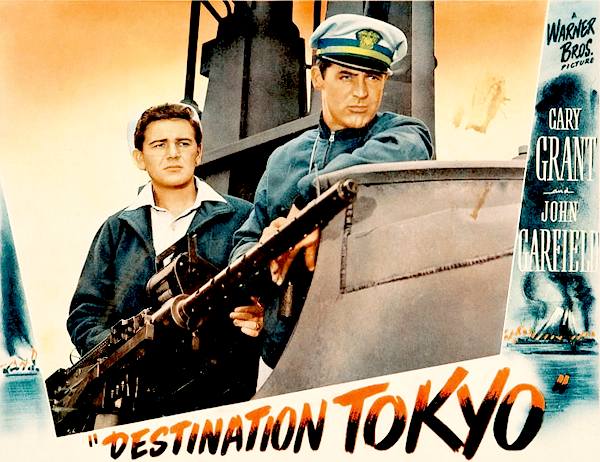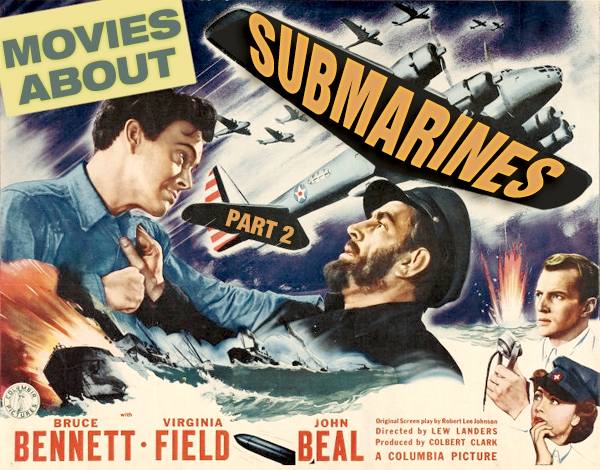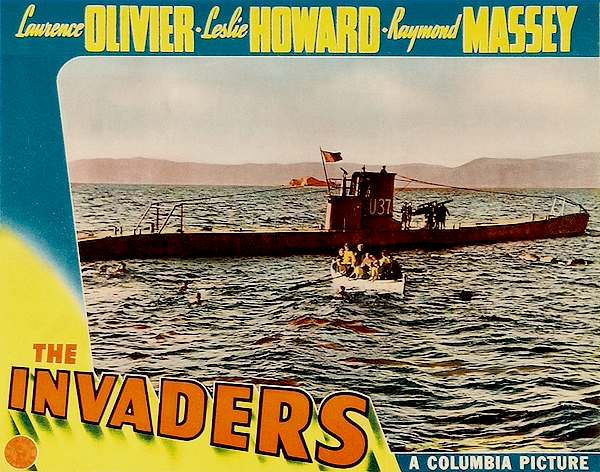SUBMARINE MOVIES OF NOTE
ATLANTIS STORY MAP & OPERATION HOMEPAGE
WHAT MAKES A SUBMARINE MOVIE
Submarine films are a subgenre of war film in which the majority of the plot revolves around a submarine below the ocean's surface. Films of this subgenre typically focus on a small but determined crew of submariners battling against enemy submarines or submarine-hunter ships, or against other problems ranging from disputes amongst the crew, threats of mutiny, life-threatening mechanical breakdowns, or the daily difficulties of living on a submarine.
The danger from the extreme pressure of deep water dives and the claustrophobic, cramped submarine quarters imbues films of the subgenre with a great deal of dramatic tension. To heighten this tension, these films often depict submarine commanders descending below "hull crush depth" to evade attackers. Films from this subgenre tend to feature dramatic scenes in which submarine-hunters try to destroy submarines with depth charges. A stock scene in the submarine genre film is the depiction of a grim-faced submarine crew waiting in silence as depth charges explode overhead and bolts fly out of bulkheads in the submarine (they are dead silent because sound carries extremely well underwater, and so even the sound of men talking on a submarine would be picked up by normal sonar on other ships). Modern (post-World War II) movies often add conflict between different enemies.
Also a typical feature in all depicted eras is the sudden switch from hunter to hunted; while stalking enemy ships or carrying deadly nuclear missiles, the submarine often becomes, within moments, the hunted victim of overwhelming attack, the crew fleeing for its collective life.
While submarine films do use dramatic battle scenes, much of the tension in these movies tends to be created using other devices, such as conflict between officers, a threatened mutiny, damage to the boat, or life-threatening problems with the diving equipment or the engines/nuclear reactor. This sets this sub-genre apart from its parent genre of war films, which tend to focus more on battle scenes. Several submarine films use occasional 'dark humor' as comic relief to the tension, in common with other war films.
FAMOUS SUBMARINE MOVIES - UP PERISCOPE
About once every four years a submarine based movie is released. Most of these were shortly after World War Two. There has though been a recent revival of naval movies with CGI reducing the cost of production and improving the general feel of realism, where in the past large scale models did not quite submerge us.
CRIMSON
TIDE - Crimson Tide is a 1995 American action thriller film directed by Tony Scott and produced by Don Simpson and Jerry Bruckheimer. It takes place during a period of political turmoil in Russia, in which ultranationalists threaten to launch nuclear missiles at the United States and Japan.
The film focuses on a clash of wills between the seasoned commanding officer of a U.S. nuclear missile submarine (Gene Hackman) and his new executive officer (Denzel Washington), arising from conflicting interpretations of an order to launch their missiles. The story parallels a real incident during the Cuban Missile Crisis.
Hans Zimmer, who scored the film, won a Grammy Award for the main theme, which heavily uses synthesizers instead of traditional orchestral instruments. An extended cut, which incorporates seven minutes of deleted scenes, was released on DVD in 2006, while the 2008 Blu-ray release only includes the theatrical version.
K19 THE WIDOWMAKER, PARAMOUNT 2002 - Harrison Ford stars as a Russian naval officer who, at the height of the Cold War in 1961, has been given command of the Soviet Union’s first nuclear submarine, K-19. The vessel’s previous commander, played by Liam Neeson, has been demoted to executive officer because of his outspoken assertions that the flagship is not yet ready for deployment. Political pressure forces Vostrikov to sail his crew into the North Atlantic for a missile fire test, intending it to serve as a warning to the U.S. that its enemy is now its technological equal. The test is a success, but a disastrous leak in the K-19′s reactor cooling system soon threatens to ignite the sub’s nuclear payload. An event which would certainly be mistaken for an opening salvo, sparking World War III.
U-571, DINO DE LAURENTIS 2000 - The film was directed by Jonathan Mostow, starring Matthew McConaughey, Bill Paxton, Harvey Keitel, Thomas Kretschmann, Jon Bon Jovi, Jack Noseworthy, Will Estes and Tom Guiry. In the film, a World War II German submarine is boarded in 1942 by disguised United States Navy submariners seeking to capture her Enigma cipher machine. The film was financially successful and generally well-received by critics in the USA and won an Academy Award for sound editing. The fictitious plot attracted substantial criticism since, in reality, it was British personnel from HMS Bulldog who first captured a naval Enigma machine (from U-110 in the North Atlantic in May 1941), months before the United States had even entered the war. The anger over the inaccuracies even reached the British Parliament, where Prime Minister Tony Blair stated that the film was an "affront" to British sailors.
FULL FATHOM FIVE, NEW HORIZONS 1990 - Based on the novel by Bart Davis, and set in the days before the US invasion of Panama in 1989. Panamanian rebels seize a Soviet submarine (the “Victor Three class submarine CCCP Kirov“) and threaten America with a nuclear attack on Houston, Texas. Only commanding officer Peter MacKenzie (Michael Moriarty) of the USS Aspen, a fictional Los Angeles-class submarine, can stop the villains. In the film technical accuracy is lax. The submarine warfare tactics used are absurd and the military structure, uniforms, insignia, and jargon are imaginary. The novel does not have these technical flaws, and has been published in several languages, including Chinese and Japanese.
GRAY LADY
DOWN, UNIVERSAL 1978 - Based on David Lavallee’s book Event 1000. An aging, respected commander Paul Blanchard, (Charlton Heston) on his final tour before promotion to squadron command. Surfaced just off the coast of Rhode Island, his boat, the USS
Neptune (fictional), is struck by a freighter in heavy fog, and sinks to a depth of 1,450 feet, (442 meters) before coming to rest on a canyon ledge above an even deeper trench.
A US Navy rescue force, commanded by Captain Bennett (Stacy Keach), arrives on the scene, but a sub-sea landslide has rolled the Neptune to such an angle that is now inaccessible. A small but capable experimental submersible, the Snark, run by a nonconformist Navy misfit Captain Gates (David Carradine) is brought in to assist with the rescue.
Submarine special-effect footage and the large-scale model originally used to portray the fictional submarine USS Tigerfish in the
1969 movie, Ice Station Zebra, is
reused.
ICE STATION
ZEBRA, MGM 1969 - A cold-war era suspense and espionage film loosely based upon
Alistair MacLean‘s 1963 novel of the same name. Both have parallels to real-life events that took place in 1959, concerning a missing experimental Corona satellite capsule (Discoverer II) that inadvertently landed near Spitsbergen, situated in the
Arctic
Ocean, on April 13th, believed to have been recovered by Soviet agents.
In the novel, there is no Russian submarine and no confrontation on the ice with the Russians. The attempted sinking of the US submarine, is we think, based on the loss of the Royal Navy submarine HMS Thetis in Liverpool Bay in 1939, where the inner cap to a torpedo tube is tampered with to make it appear that the outer door was closed, but was in fact open
to the ocean allowing water to enter at the rate of one ton per second, causing the submarine to sink with the loss of 98
lives.
HELL CATS OF THE NAVY, RKO 1957 - Ronald Reagan and Nancy Davis made their only joint film appearance in this picture. Ronnie plays Casey Abbott, commander of a WW2 submarine, and Nancy portrays navy nurse Helen Blair, Abbott’s off-and-on girlfriend. During a delicate mission in which his sub, the USS Starfish, is ordered to retrieve a revolutionary new Japanese mine, Abbott is forced to leave frogman Wes Barton (Harry Lauter) behind so that he might save the rest of his crew. Abbott’s second-in-command Don Landon, (Eduard Franz) is convinced that Abbott’s sacrifice of Barton was because the dead man had been pursuing Helen. The rest of the film is spent proving Abbott right and Barton wrong. Based on the non-fiction book Hellcats of the Sea by Vice Admiral Charles A. Lockwood.
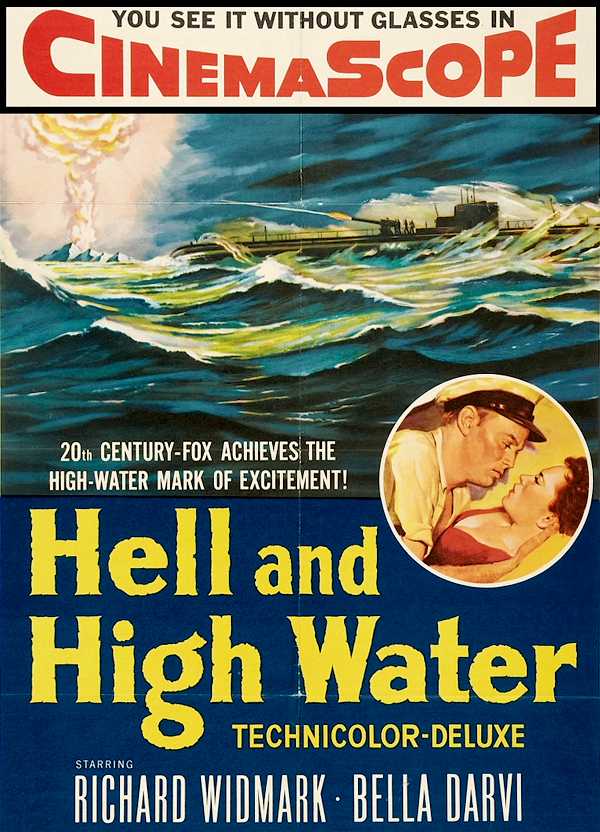
HELL AND HIGH WATER, 20th CENTURY FOX 1954 - Hell and High Water brings an intriguing Cold War slant to a standard submarine melodrama. Richard Widmark plays a sub commander who agrees to sell his services to noted atomic scientist Victor Francen and his assistant (and daughter) Bella Darvi. Francen intends to prove that the Communists intend to launch a nuclear attack on Korea from an Arctic island, then blame the attack on the United States. Widmark frankly doesn’t give a fig about politics, but he is won over by the sincerity of Francen and his idealistic cohorts, and by the beauty of Ms. Darvi. Before the Reds’ evil intentions can be thwarted, however, Widmark must face down a Communist Chinese submarine loaded with highly volatile atomic weaponry. The special effects are very impressive, especially for a mid-1950s 20th Century-Fox production.
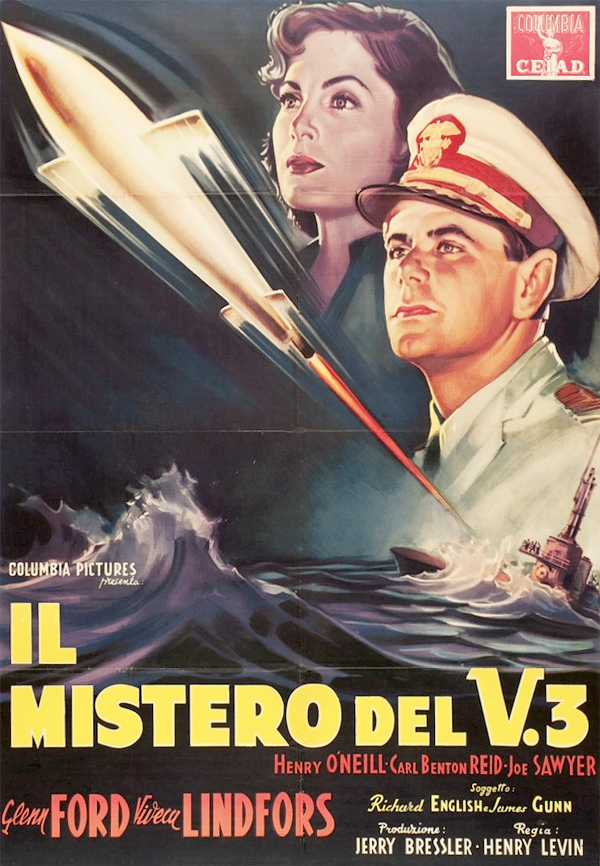
THE FLYING MISSILE, COLUMBIA 1950 - Cold War era film starring Glenn Ford and Viveca Lindfors. Made with the cooperation of the US Navy, it is a fictionalised account of the, only then recently revealed story, of the US Navy’s first firing of submarine-based cruise missiles.
WE DIVE AT DAWN, GUAMONT 1943 - Is a war film directed by Anthony Asquith, starring John Mills and Eric Portman as Royal Navy submariners in the Second World War. It was written by Val Valentine and J. B. Williams with un-credited assistance from Frank Launder. It was produced by Edward Black. The mission is to sink the Brandenburg in a mini-submarine called the Sea Tiger.
DESTINATION TOKYO 1943, WARNER BROS - Destination Tokyo ranks as one of the most intelligent of wartime thrillers. Cary Grant is a tower of strength as Captain Cassidy, skipper of American submarine USS Copperfin, bound for Tokyo harbor. Its mission: to allow a Navy meteorologist to survey Japanese weather conditions, in preparation for a major Allied assault, the Doolittle Raid. Tony Curtis enlisted in the United States Navy after Pearl Harbor was bombed and war was declared. Having been inspired by Grant’s role, he chose submarine duty and served aboard USS Proteus. The film also influenced Ronald Reagan (according to his autobiography) in his decision to accept the lead as a World War II-submarine captain in the 1957 movie Hellcats of the Navy.
ATLANTIC CONVOY 1942, COLUMBIA - Released shortly after the similar Columbia wartime story Submarine Raider, Atlantic Convoy is set on the coast of Iceland. Civilian weatherman Carl Hansen (John Beal) is suspected of being a Nazi spy after an unexpected enemy attack on an Allied convoy. With the help of nurse Lida Adams (Virginia Field), Beal not only proves his innocence but also rounds up a gang of Fifth Columnists.
THE INVADERS 1941, COLUMBIA - AKA 49th Parallel – German U-boat (U-37) terrorizes Allied shipping in the Gulf of St. Lawrence. Trying to evade Canadian Military Forces, U37 high-tails it up to Hudson Bay. The U-boat’s fanatical Nazi captain sends members of his crew ashore to look for food and supplies at a Hudson Bay Company outpost. As the landing party reaches the shore, the U-boat is spotted and sunk by the Canadians. The group of Nazi naval officers and crewmen are now stranded on Canadian soil. The Nazi Lieutenant plans his crews’ return to the Fatherland by going overland; seeking refuge in the neutral United States.
LIST OF SUBMARINE MOVIES - WIKIPEDIA
This is a list of movies as posted on Wikipedia.
They are grouped by era, in which a submarine plays a significant role in the storyline. Many submarine movies are set in
World War II or during the Cold War, with varying degrees of fictional elements. Some movies depict historical events from actual battles or incidents, such as Above Us the Waves, a 1955 film which depicts the true story of the British Royal Navy's midget submarines attacks on the
Tirpitz. Other submarine movies develop a fictional plot created using submarine types and tactical or technological issues that are associated with these conflicts, such as the film U-571, which tells the story of a fictional
U-boat in
World War
II. In some cases, these fictional submarine films may weave together some details from actual events. Other submarine films from the fantasy or science fiction film genres depict entirely fictitious events, such as the various film versions of Jules Verne's novel
20,000 Leagues Under the
Sea. The movie outline featured on this page
for Operation Neptune, is a mixture of real
submarines and warships with a fictional plot
and the inclusion of the latest drone
submarine hunter-killer.
SUBMARINE INDEX
AUKUS - Trilateral nuclear proliferation submarine pact, Australia, UK, US
HMS Astute 1st of Class BAE Systems
Nuclear PWR reactors for submarines
U530 & U997
- Kriegsmarine Unterseeboots WWII
U534 - German U-boat WWII
U986
- U-Boat
declared missing in April 1944
http://delaurentiisco.com/
https://www.warnerbros.co.uk/
http://www.sonypictures.com/
http://www.columbiatristar.co.uk/
http://www.icsu.org/
http://www.baesystems.com/
http://news.sky.com/
http://www.mpaa.org/
https://www.cia.gov/index.html
http://www.defense.gov/
https://pentagontours.osd.mil/
CHARACTERS | GOLD | MEDIA | MOVIES | SCREENPLAY | SUBMARINES
This website is Copyright © Cleaner Oceans Foundation Ltd, April 2023. Asserted as per the Berne Convention.
In this fictional story, the characters and events are the product of the author's imagination.
The names Elizabeth Swann™ and John Storm™, are registered trademarks.
